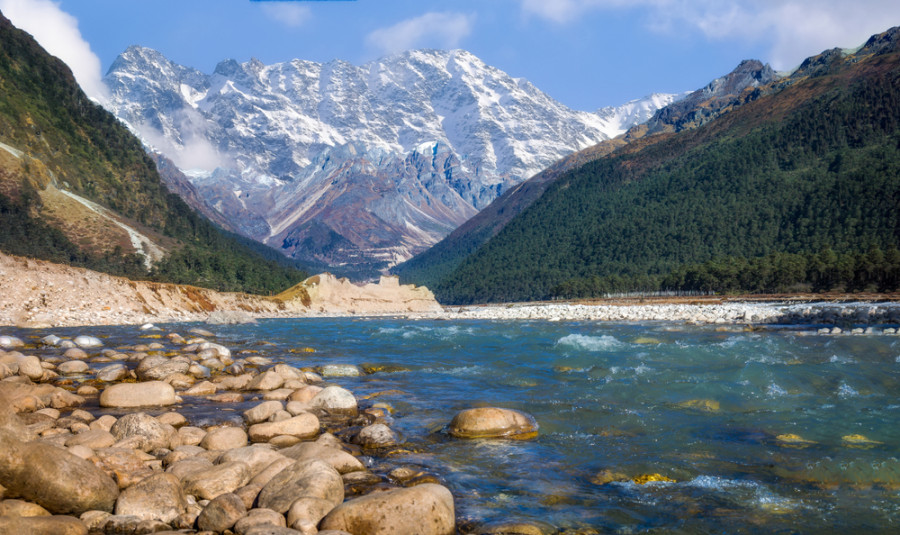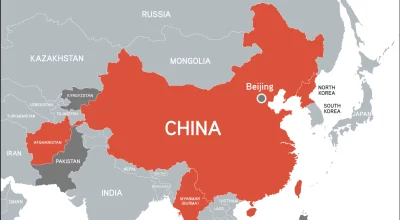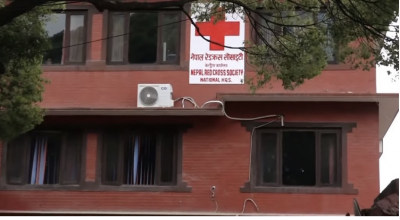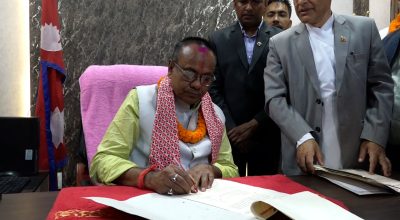
In South Asia, transboundary rivers constitute a significant
proportion of the region’s supply of water. Transboundary rivers have
the dual role of supplementing national supplies and meeting the needs
of cross-country and cross-regional economic units. The uneven
geographical distribution of water has long triggered both professional
and public debates in the basin countries. The former mostly based on
science and technicalities and the latter mostly on politics,
environment and national security. Public issues converge on the growing
awareness of disparities in water resource availability; pricing and
distributive structure; abuse of and disregard to the agreed formula by
one group or nation; environmental threats leading to human displacement
and imprudent interventions in the utility spheres. Variables like
population growth, level of economic availability, accessibility of
other domestic water sources, climate change, among others, have helped
increase water conflicts that tend to spread over other bilateral and
regional affairs.
Typology of Conflicts
Among the varieties of conflicts over the issues of water resource management, the major typologies can be divided into four genres. Firstly, a conflict within the country, primarily an internal affair within the sovereign domain. This has appeared in the form of protracted political chicanery and economic losses. This conflict could again be further typified into three broad categories: conflict between either two or three constituent provincial governments like the Kaveri water dispute between Tamil Nadu and Karnataka and Ravi Beas between Punjab and Haryana; conflict between the provincial and the federal government as exemplified in the Kalabagh dam project in Pakistan; and clash between the civil society and the respective governments as found in dam projects like Kaptai in Bangladesh and Tehri in India.
Secondly, a conflict arising out of discontentment and discord in the sharing of water resources at the bilateral level. The most catching example is sharing of Ganga water at Farakka and Teesta between Bangladesh and India respectively. Thirdly, a conflict with the sources of funding both at the bilateral and international level including the funding by the international financial and development institutions. Kosi and Gandak built under Indian aid projects and the abandoned Arun III project, financed by the World Bank belong to this category. And finally, in the post-economic reforms period, conflict with private investors is emerging to be a major area of discontentment.
Disagreements in agreements
Like the India-Pakistan Indus Water Treaty (1960), India-Nepal agreements on the Koshi Project (1954); the Gandak Irrigation and Power Project (1959) and the Treaty Concerning the Integrated Development of the Mahakali River (1996), there have been protracted disagreements on the relatively successful India-Bangladesh Treaty on Sharing of the Ganges Waters at Farakka (1996). Article VIII of the Treaty does refer to the central question of augmentation of water flow. India proposed two such measures: diversion of the flow of Sankosh River of Bhutan in North Bengal and no permission to build any major irrigation projects in upstream sites in Bihar and Uttar Pradesh. However, both these measures have remained untouched in implementation. The Sankosh proposal created a hue and cry among the people and local authorities in Bhutan and North Bengal. Their firm apprehension was about large-scale ecological stress and disaster that the genetically vital biosphere of the Eastern Himalayas may be subjected to. India’s Environment Ministry too outrightly opposed this proposal. It would also be a Herculean task to stop the farmers and landlords in Bihar and Uttar Pradesh from using Ganga water. Given the politico-administrative sensitivities, the state of governance in these two states and the social resistance involved, any proposal involving the use of water at the upstream level in the agreement was just political symbolism.
Similarly, an unavoidable assumption on which the entire treaty is based is that the minimum flow at Farakka would continue to be maintained at the historically recorded 50,000 cusecs. The Treaty is yet to be tested if the flow at Farakka goes below this historically stipulated quantum. Article I (iii) does mention that, ‘in the event the flow at Farakka falls below 50,000 cusecs in any 10-day period, the two governments will enter into immediate consultations to make adjustments on an emergency basis, in accordance with principles of equity, fair play and no harm to either party’. However, the most critical question of accepting a lower share by either side, which involves a tremendous amount of willingness to sacrifice and adjust, is yet to be tested. The ‘latent negativism’ continues to appear quite often.
Security and Bilateralism
In most of these treaties, varied perceptions over security and sovereignty issues are widely discussed. However, are these concerns within the rubric of a larger national security matrix triggered by geo-politics and geo-economics? Or are they specific to water, like non-traditional security threats as reflected in disasters, water and energy insecurity? Are the concerns similar at the national and local level? Have the nature and contents of national security concerns undergone changes over the decades? These questions are seldom discussed at the official level and through ‘backchannels’.
Bilateral vs multilateral negotiation is an issue widely discussed. India’s proven bilateral position in terms of negotiations on any issues related to the neighbourhood has been questioned in the past. This is more so as in most cases India is either a middle or an upper riparian state whereas Nepal is exclusively upper riparian. Why then are such issues never a part of the regional cooperation process? How will Nepal benefit if these negotiations are held in the larger regional context?
The aspect of federalism has also become very critical, as demonstrated by the stubbornness of West Bengal in sharing water from the Teesta with Bangladesh. Federal units like Bihar, Uttarakhand, Uttar Pradesh and West Bengal have their own perceptions, dilemmas and political standing on cross border river water sharing. In some cases, the national interest of Nepal and India vary much with provincial interests. Studies in the past show that the borderland communities perspective in Nepal and Bangladesh match very well with the other side of the border provincial perspective whereas the national perspective varies so much.
Does this compact geography perspective (borderland communities sharing the same culture, cross border exchanges, affected by flood etc) play a role in either pushing forward or pulling back any water-related agreements? Will this new dimension negate the traditional framework of negotiations and lead to newer, robust and resilient matrices of negotiations? This has happened. India changed its stand vis-à-vis Bangladesh within 10 years of the failure of the Myanmar-Bangladesh-India trilateral gas pipeline in 2005. The Behrampur—Bheramara electricity transmission line between India and Bangladesh—leading to national grid interconnection—and India’s agreeing in principle to act as a transit corridor for electricity produced in Bhutan and Nepal are indicative of this new line of thinking. This is adequately reflected in the guidelines for Import/Export (Cross Border) of Electricity, issued by India in December 2018. (Source: The Kathmandu Post)
















